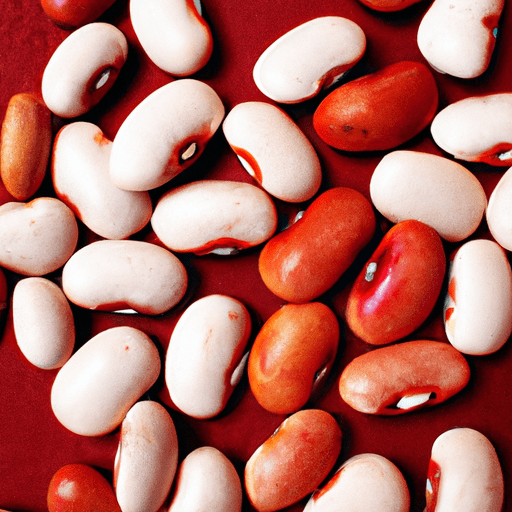All You Need to Know About Dried Butter Beans
Butter beans, also known as lima beans, are a versatile and nutritious legume that can elevate your culinary experience. From classic comfort food dishes to light and healthy salads, these creamy beans have found their place in kitchens all over the world. In this blog post, we will delve into the details of dried butter beans, exploring their taste, common uses in cooking, nutritional value, and uncovering some interesting facts and history. So, let’s get started!
Taste and Texture
Dried butter beans have a deliciously creamy and buttery flavor that sets them apart from other legumes. When cooked, they develop a smooth, almost velvety texture that adds a comforting element to any dish. They have a subtle earthy undertone and a slightly nutty flavor, making them a fantastic addition to both hearty and light recipes.
Common Culinary Uses
Dried butter beans are incredibly versatile and can be used in a variety of dishes. Here are a few popular ways to incorporate them into your cooking repertoire:
- Soups and stews: Butter beans are a common ingredient in hearty soups and stews. Their creamy texture adds body to the dish, while their delicate flavor pairs beautifully with vegetables, herbs, and aromatic spices.
- Casseroles and bakes: These beans work wonders in casseroles and bakes. Whether you’re preparing a vegetarian moussaka or a hearty bean casserole, dried butter beans can provide a wholesome and protein-packed base to your dish.
- Salads: Butter beans can add a nutritious punch to your salad creations. Toss them with fresh greens, cherry tomatoes, cucumbers, feta cheese, and a tangy dressing for a light and satisfying meal.
- Dips and spreads: Mashed butter beans can serve as a delicious alternative to traditional spreads or dips. Simply combine them with garlic, lemon juice, olive oil, and your favorite herbs to create a flavorful and healthy dip for crackers or fresh vegetables.
Nutritional Value
Not only do dried butter beans taste marvelous, but they also boast an impressive nutritional profile. Here are some essential nutrients found in dried butter beans:
- Protein: Butter beans are an excellent plant-based source of protein, making them a valuable addition to vegetarian and vegan diets. A single cup of cooked butter beans contains approximately 15 grams of protein, helping to promote muscle growth and repair.
- Fiber: These beans are packed with dietary fiber, which is essential for maintaining a healthy digestive system. Fiber aids in digestion, prevents constipation, and helps stabilize blood sugar levels.
- Vitamins and minerals: Butter beans are a good source of various vitamins and minerals, including iron, magnesium, potassium, and folate. These nutrients contribute to energy production, bone health, and a well-functioning immune system.
Fun Facts and History
- Butter beans are native to Central and South America and have been cultivated for thousands of years.
- These beans got their name from their buttery texture and taste.
- In the Southern United States, butter beans have long been a staple in traditional dishes such as succotash and hoppin’ John.
- While dried butter beans require soaking and cooking, canned butter beans offer a convenient alternative for those short on time.
So, the next time you’re looking to add a touch of creaminess and flavor to your cooking, remember to reach for dried butter beans. They are a versatile ingredient that can turn an ordinary dish into something truly extraordinary. Whether you’re preparing a hearty soup, a flavorful casserole, or a refreshing salad, these beans are sure to impress. Don’t miss out on the nutritional benefits and delightful taste that dried butter beans have to offer. Happy cooking!
Origin and Common Uses:
- Butter beans, also known as lima beans, are native to Central and South America and have been cultivated for thousands of years.
- They are named after the capital city of Peru, Lima, because they were originally found in this region.
- Today, butter beans are commonly grown and used in various cuisines around the world, including North America, Europe, Africa, and Asia.
- In Mediterranean cuisine, they are often used in soups, stews, casseroles, or as a side dish.
- In Southern United States cuisine, butter beans are a popular ingredient in dishes such as succotash, soups, and butter bean hummus.
Nutritional Benefits:
- Butter beans are a good source of plant-based protein, dietary fiber, and various vitamins and minerals.
- They are particularly high in folate, iron, potassium, and magnesium.
- Butter beans are also rich in antioxidants, such as flavonoids and phenolic compounds, which may have several health benefits.
- Due to their high fiber content, they can help promote healthy digestion and regulate blood sugar levels.
Unique Properties and Historical Significance:
- Butter beans have a buttery texture and a mild, creamy flavor that pairs well with a wide range of ingredients.
- In ancient Mesoamerican civilizations, butter beans were so highly regarded that they were often buried with the deceased as a symbolic offering.
- During the American Civil War, Union troops relied on dried butter beans as a significant source of nutrition.
- Dried butter beans can be stored for a long time, making them a convenient pantry staple for many households.
- It is important to note that raw butter beans contain a naturally occurring toxin called linamarin, which is neutralized by cooking. Therefore, they should always be thoroughly cooked before consumption to ensure safety.




Use the share button below if you liked it.
It makes me smile, when I see it.